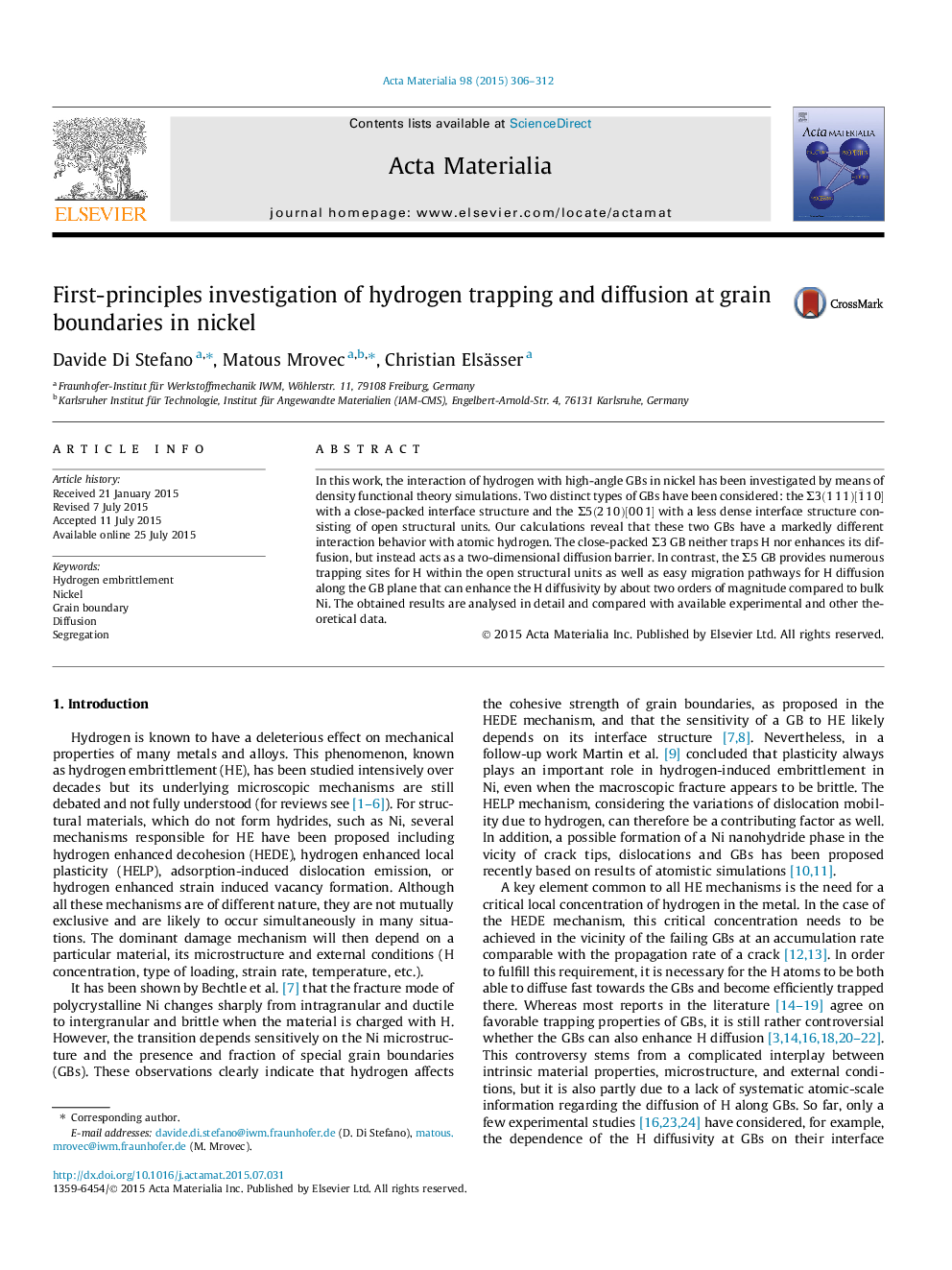| Article ID | Journal | Published Year | Pages | File Type |
|---|---|---|---|---|
| 1445279 | Acta Materialia | 2015 | 7 Pages |
In this work, the interaction of hydrogen with high-angle GBs in nickel has been investigated by means of density functional theory simulations. Two distinct types of GBs have been considered: the Σ3(111)[1¯10] with a close-packed interface structure and the Σ5(210)[001] with a less dense interface structure consisting of open structural units. Our calculations reveal that these two GBs have a markedly different interaction behavior with atomic hydrogen. The close-packed Σ3Σ3 GB neither traps H nor enhances its diffusion, but instead acts as a two-dimensional diffusion barrier. In contrast, the Σ5Σ5 GB provides numerous trapping sites for H within the open structural units as well as easy migration pathways for H diffusion along the GB plane that can enhance the H diffusivity by about two orders of magnitude compared to bulk Ni. The obtained results are analysed in detail and compared with available experimental and other theoretical data.
Graphical abstractFigure optionsDownload full-size imageDownload high-quality image (141 K)Download as PowerPoint slide
